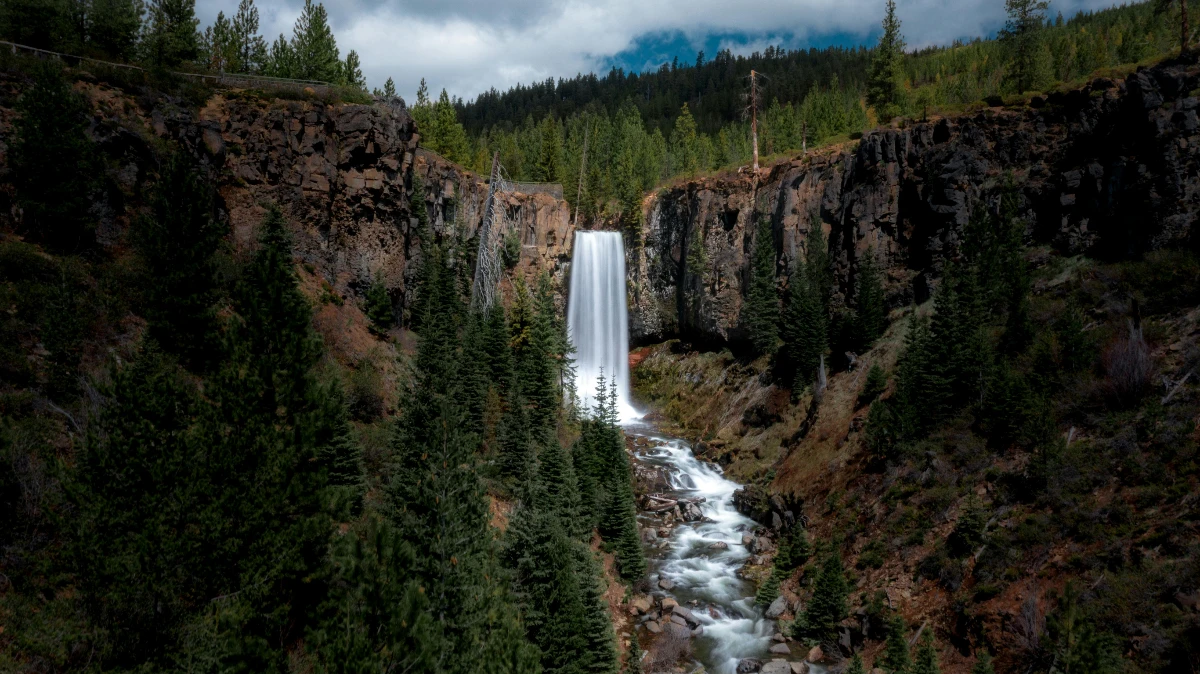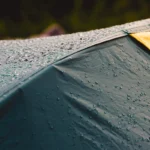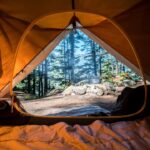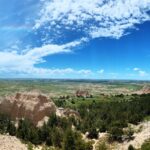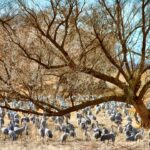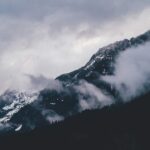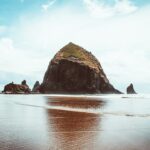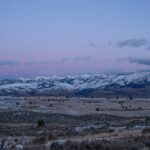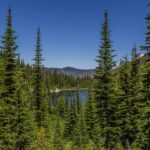The Cascades, a mountain range that stretches from northern California to British Columbia, is home to some of the most breathtaking waterfalls in the United States. These majestic cascades are a result of the region’s unique geology and abundant rainfall, creating a paradise for nature lovers and outdoor enthusiasts. From the iconic Multnomah Falls in Oregon to the hidden gems of the Washington Cascades, there is no shortage of stunning waterfalls to explore in this region.
In addition to their natural beauty, the Cascades hold great significance for the surrounding communities. They provide a source of clean drinking water, hydroelectric power, and recreational opportunities. The waterfalls in this region have become popular tourist destinations, attracting visitors from all over the world who come to witness their awe-inspiring beauty.
The Best Time to Visit the Cascades: A Seasonal Guide
The Cascades experience distinct seasons, each offering its own unique charm and opportunities for exploration. The best time to visit the Cascades depends on what you’re looking for in your trip.
Spring is a wonderful time to visit as the snow begins to melt, resulting in powerful and impressive waterfalls. The rivers and streams are full, creating a dramatic display of rushing water. This is also a great time for hiking and enjoying the vibrant wildflowers that bloom throughout the region.
Summer is the peak tourist season in the Cascades, with warm weather and longer days. The waterfalls may not be as powerful as in spring, but they still offer a stunning sight. This is a great time for outdoor activities such as hiking, camping, and fishing.
Fall brings vibrant colors to the Cascades as the leaves change, creating a picturesque backdrop for waterfall viewing. The crowds begin to thin out during this season, making it a more peaceful time to visit. Fall also offers opportunities for mushroom hunting and birdwatching.
Winter transforms the Cascades into a winter wonderland, with snow-covered peaks and frozen waterfalls. This is a great time for winter sports such as skiing and snowboarding. However, it’s important to note that some waterfalls may be inaccessible or difficult to reach during this time due to snow and ice.
When planning a trip to the Cascades, it’s important to check weather conditions and road closures beforehand. Some waterfalls may have limited access during certain seasons, so it’s best to plan accordingly and be prepared for any changes in weather.
Exploring the Columbia River Gorge: Home to Iconic Waterfalls
The Columbia River Gorge, located on the border of Oregon and Washington, is a breathtakingly beautiful area known for its iconic waterfalls. This 80-mile-long canyon is carved by the Columbia River and is home to numerous waterfalls that attract visitors from all over the world.
One of the most famous waterfalls in the Columbia River Gorge is Multnomah Falls. This 620-foot-tall waterfall is the tallest in Oregon and is a must-see for any visitor to the region. The falls are easily accessible from the Historic Columbia River Highway and have a viewing platform that offers stunning views of the cascading water.
Another popular waterfall in the area is Wahkeena Falls. This 242-foot-tall waterfall is known for its picturesque setting and can be reached via a short hike from the Historic Columbia River Highway. The trail leading to Wahkeena Falls also offers views of several other smaller waterfalls along the way.
To explore the Columbia River Gorge and its waterfalls, it’s best to start at the Columbia River Gorge Visitor Center in Oregon. Here, you can obtain maps, information about hiking trails, and learn about the history and geology of the area. There are several hiking trails that lead to different waterfalls in the gorge, ranging from easy walks to more challenging hikes. It’s important to stay on designated trails and follow any posted signs or guidelines to ensure your safety and the preservation of the natural environment.
Discovering the Hidden Gems of the Washington Cascades
While the Columbia River Gorge is home to some of the most iconic waterfalls in the Cascades, there are also hidden gems waiting to be discovered in the Washington Cascades. These lesser-known waterfalls offer a more secluded and intimate experience, away from the crowds.
One such hidden gem is Wallace Falls, located in Wallace Falls State Park near Gold Bar, Washington. This series of nine waterfalls cascades down a steep granite cliff, creating a stunning display of natural beauty. The park offers several hiking trails that lead to different viewpoints of the falls, ranging from an easy 1.2-mile hike to a more challenging 5.6-mile hike.
Another hidden gem in the Washington Cascades is Snoqualmie Falls. While not as unknown as some other waterfalls in the region, it still offers a unique and awe-inspiring experience. This 268-foot-tall waterfall is located near the town of Snoqualmie and can be viewed from a designated overlook or from a trail that leads down to the base of the falls.
To find these hidden gems and explore the Washington Cascades, it’s best to do some research beforehand and consult local resources such as guidebooks or websites dedicated to waterfall hunting. Some waterfalls may require a bit of hiking or off-trail exploration to reach, so it’s important to be prepared with proper footwear, clothing, and supplies. It’s also important to respect the natural environment and leave no trace when visiting these hidden gems.
The Great Outdoors: Hiking Trails and Activities Near the Cascades
The Cascades offer a plethora of outdoor activities for nature lovers and adventure seekers. From hiking trails that lead to stunning viewpoints to adrenaline-pumping activities such as whitewater rafting and rock climbing, there is something for everyone in this region.
One of the most popular hiking trails in the Cascades is the Pacific Crest Trail (PCT). This iconic trail stretches over 2,600 miles from Mexico to Canada, passing through the heart of the Cascades. Hiking a section of the PCT allows you to experience the beauty and diversity of the region, from lush forests to alpine meadows and snow-capped peaks.
For those looking for a shorter hike with stunning views, the Angels Rest Trail in Oregon is a great option. This 4.8-mile roundtrip hike offers panoramic views of the Columbia River Gorge and several waterfalls along the way. The trail is moderately challenging, with some steep sections, but the reward at the top is well worth it.
In addition to hiking, there are plenty of other outdoor activities to enjoy in the Cascades. Whitewater rafting on the Deschutes River in Oregon or the Wenatchee River in Washington offers an exhilarating experience for adventure enthusiasts. Rock climbing at Smith Rock State Park in Oregon or Index Town Wall in Washington provides a challenge for climbers of all skill levels.
When planning a hiking trip or outdoor adventure in the Cascades, it’s important to be prepared and take necessary precautions. Check weather conditions and trail conditions beforehand, and make sure to bring appropriate gear, clothing, and supplies. It’s also important to follow any posted guidelines or regulations to ensure your safety and protect the natural environment.
Capturing the Beauty of the Cascades: Photography Tips and Tricks
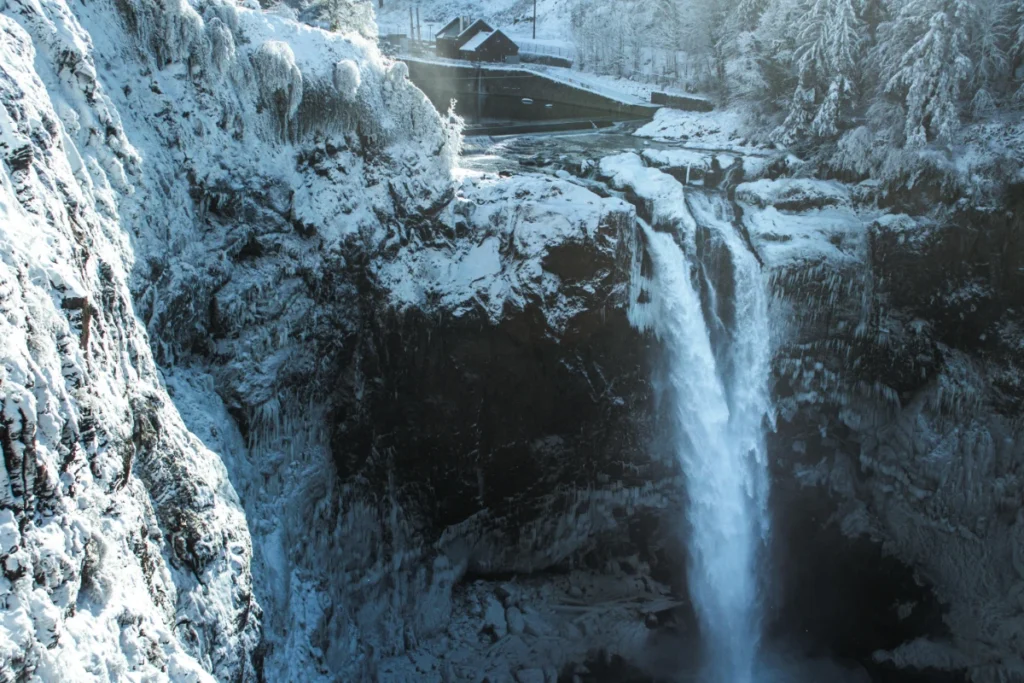
The Cascades offer endless opportunities for photographers to capture stunning images of waterfalls, mountains, and landscapes. Whether you’re a professional photographer or just enjoy taking photos as a hobby, there are several tips and tricks that can help you capture the beauty of the Cascades.
One of the most important aspects of photography in the Cascades is lighting. The best time to capture stunning photos is during the golden hour, which is the hour after sunrise or before sunset. During this time, the light is soft and warm, creating a magical atmosphere. It’s also a good idea to avoid shooting in harsh midday sunlight, as it can create harsh shadows and wash out colors.
When photographing waterfalls, it’s important to use a tripod to ensure sharp images. Waterfalls can be challenging to capture due to their constant movement, so using a tripod will help stabilize your camera and prevent blurry photos. It’s also a good idea to use a slow shutter speed to create a silky smooth effect on the water.
In addition to waterfalls, the Cascades offer plenty of other photography opportunities. From alpine meadows filled with wildflowers to snow-capped peaks and crystal-clear lakes, there is no shortage of stunning landscapes to capture. It’s important to experiment with different angles, compositions, and settings to find your own unique style and perspective.
Some popular photography spots in the Cascades include Mount Rainier National Park in Washington, Crater Lake National Park in Oregon, and Mount Hood in Oregon. These locations offer iconic views and are well-known for their photographic opportunities. However, don’t be afraid to explore off-the-beaten-path locations and find your own hidden gems.
The Science Behind the Cascades: How These Waterfalls Formed
The Cascades are not only a stunning natural wonder but also a testament to the geological processes that have shaped our planet over millions of years. These waterfalls are a result of volcanic activity and erosion, creating a unique landscape that is both beautiful and scientifically significant.
The Cascades were formed by a series of volcanic eruptions that occurred over millions of years. The region is part of the Pacific Ring of Fire, an area where several tectonic plates meet and interact. The movement of these plates has resulted in the formation of numerous volcanoes, including Mount Rainier, Mount Hood, and Mount St. Helens.
The volcanic activity in the Cascades has also contributed to the formation of the region’s waterfalls. As lava flows cooled and solidified, they created natural barriers that diverted rivers and streams, resulting in the formation of waterfalls. Over time, erosion from the flowing water carved out deep canyons and valleys, further shaping the landscape.
In addition to volcanic activity, the abundant rainfall in the Cascades plays a crucial role in the formation of waterfalls. The region receives an average of 100 inches of rain per year, creating a constant flow of water that cascades down steep cliffs and creates stunning displays of natural beauty.
To learn more about the science behind the Cascades and their waterfalls, there are several resources available. National parks such as Mount Rainier National Park and Crater Lake National Park offer educational programs and exhibits that explain the geological processes that have shaped the region. There are also several books and documentaries that delve into the scientific aspects of the Cascades, providing a deeper understanding of this unique natural wonder.
Cascading in Love: Romantic Getaways Near the Waterfalls
The Cascades offer a romantic backdrop for couples looking to escape the hustle and bustle of everyday life and reconnect with nature. Whether you’re celebrating an anniversary, planning a honeymoon, or simply looking for a romantic getaway, there are several destinations near the waterfalls that are perfect for couples.
One romantic destination near the Cascades is Hood River, Oregon. This charming town is located on the banks of the Columbia River and offers stunning views of Mount Hood. Couples can enjoy wine tasting at local vineyards, take a scenic drive along the Historic Columbia River Highway, or go hiking in nearby Mount Hood National Forest.
Another romantic destination near the Cascades is Leavenworth, Washington. This Bavarian-style village is nestled in the foothills of the Cascades and offers a unique and charming atmosphere. Couples can stroll through the town’s picturesque streets, enjoy a romantic dinner at one of the many restaurants, or go wine tasting at local wineries.
For a more secluded and intimate experience, couples can rent a cabin or book a stay at a bed and breakfast near one of the waterfalls in the Cascades. This allows for a more private and romantic setting, with the opportunity to wake up to the sound of rushing water and enjoy breathtaking views right from your doorstep.
When planning a romantic trip to the Cascades, it’s important to consider the preferences and interests of both partners. Whether you’re looking for adventure and outdoor activities or prefer a more relaxed and leisurely experience, there are plenty of options to choose from in this region.
Sustainable Tourism: How to Enjoy the Cascades Responsibly
As more and more people visit the Cascades to experience their natural beauty, it’s important to practice sustainable tourism to ensure the preservation of this fragile ecosystem. Sustainable tourism involves minimizing your impact on the environment, supporting local communities, and respecting the cultural heritage of the region.
One way to practice sustainable tourism in the Cascades is by staying on designated trails and following any posted guidelines or regulations. This helps protect fragile ecosystems and prevents damage to sensitive areas. It’s also important to pack out any trash or waste and leave no trace when visiting these natural areas.
Supporting local communities is another important aspect of sustainable tourism. When visiting the Cascades, consider staying at locally-owned accommodations, eating at local restaurants, and purchasing souvenirs from local artisans. This helps support the local economy and ensures that tourism benefits the communities that call this region home.
Respecting the cultural heritage of the region is also crucial when practicing sustainable tourism. The Cascades have been home to indigenous communities for thousands of years, and it’s important to respect their traditions, customs, and sacred sites. When visiting areas with cultural significance, it’s important to be respectful and follow any guidelines or restrictions that may be in place.
By practicing sustainable tourism, we can ensure that future generations can continue to enjoy the beauty and wonder of the Cascades. It’s important to be mindful of our impact on the environment and take steps to minimize our footprint when visiting these natural areas.
Unforgettable Experiences: Unique Ways to Experience the Cascades
While exploring waterfalls and hiking trails are popular activities in the Cascades, there are also several unique experiences that can make your trip truly unforgettable. From helicopter tours to hot air balloon rides, there are plenty of options for those looking for a more adventurous or unique way to experience the beauty of the Cascades.
One unique experience in the Cascades is taking a scenic helicopter tour. This allows you to see the waterfalls and mountains from a different perspective and offers breathtaking views that can’t be seen from the ground. Helicopter tours are available in several locations throughout the Cascades, including Mount Rainier National Park and Crater Lake National Park.
For those looking for a more peaceful and serene experience, a hot air balloon ride over the Cascades is a great option. This allows you to float above the treetops and enjoy panoramic views of the surrounding landscape. Hot air balloon rides are available in several locations near the Cascades, including Bend, Oregon, and Walla Walla, Washington . These rides typically last for about an hour and provide a unique perspective of the mountains, forests, and rivers that make up the beautiful Cascades region. As you gently glide through the sky, you can take in the breathtaking scenery and maybe even spot some wildlife below. The peacefulness of the hot air balloon ride allows for a truly immersive experience, where you can disconnect from the hustle and bustle of everyday life and simply appreciate the natural beauty that surrounds you. Whether you choose to embark on a sunrise or sunset ride, the colors and tranquility of the Cascades will leave you feeling refreshed and rejuvenated.
If you’re a fan of exploring the great outdoors, you won’t want to miss out on the breathtaking waterfalls of Oregon and Washington. From the iconic Multnomah Falls to the hidden gems tucked away in the Cascade Mountains, these cascades offer a truly mesmerizing experience. But why stop at just waterfalls? If you’re looking for more adventure, check out Overlanding America’s website. They have a fantastic article on overlanding in North America, providing valuable tips and insights for those who love to hit the road and explore off-the-beaten-path destinations. So grab your hiking boots and camera, and get ready for an unforgettable journey through nature’s wonders. Check out their article here!
FAQs
What are the must-see waterfalls in Oregon and Washington?
The article highlights several must-see waterfalls in Oregon and Washington, including Multnomah Falls, Silver Falls State Park, Snoqualmie Falls, and Palouse Falls.
What is the best time of year to visit these waterfalls?
The best time to visit these waterfalls is typically in the spring or early summer when the snowmelt and rainfall are at their highest, resulting in more impressive waterfalls.
Are these waterfalls easily accessible?
Most of the waterfalls mentioned in the article are easily accessible by car or short hikes. However, some may require longer hikes or more challenging terrain to reach.
Are there any fees to visit these waterfalls?
Some of the waterfalls mentioned in the article may require a small fee for parking or entrance to the park. It is recommended to check the specific park’s website for more information.
What should I bring when visiting these waterfalls?
Visitors should bring appropriate footwear for hiking, water, snacks, and a camera to capture the stunning views. It is also recommended to check the weather forecast and dress accordingly.
Are there any safety precautions to take when visiting these waterfalls?
Visitors should always stay on designated trails and follow any posted signs or warnings. It is also important to be aware of slippery rocks and potentially dangerous currents near the waterfalls.
